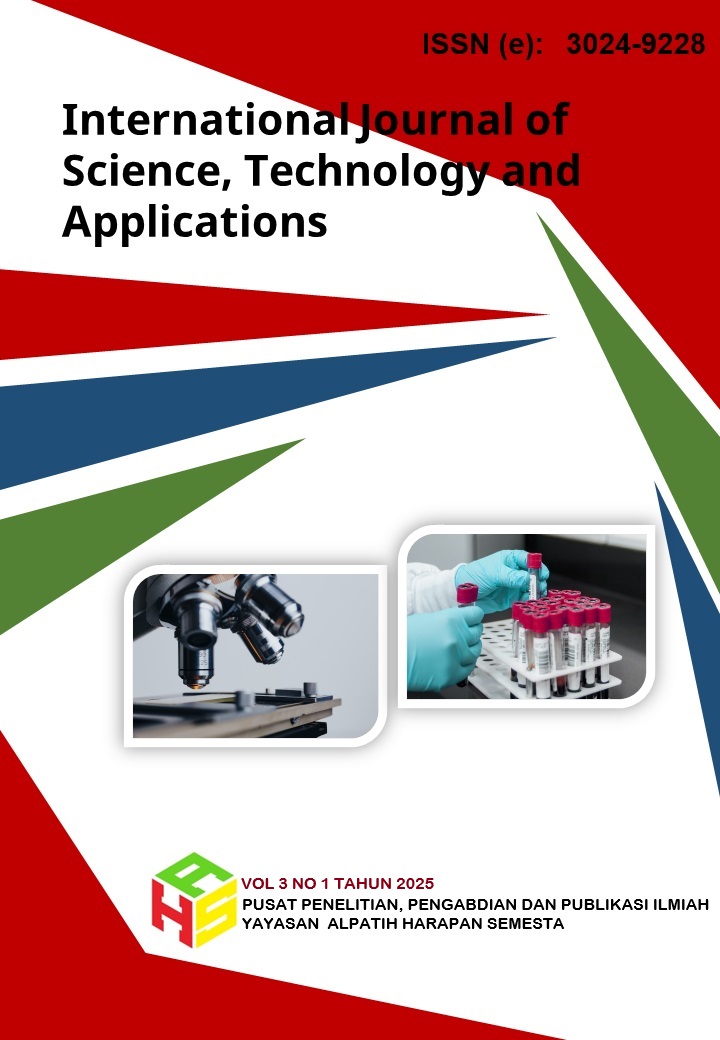Implementation of Microcontroller-Based Automatic Waste Bins To Support Work Efficiency In One of The Msmes
DOI:
https://doi.org/10.70115/ijsta.v3i1.208Keywords:
Automatic Trash Bin, Microcontroller, waste management, SMEs, ultrasonic sensorAbstract
Efficient waste management is a challenge for many SMEs, including iced tea businesses, in maintaining cleanliness and operational comfort. This research aims to design and implement a microcontroller-based automatic trash bin system as an innovative solution for waste management. The researchers focus on utilizing Arduino microcontroller technology with ultrasonic sensors to detect objects automatically. This study addresses the fundamental question of how an automated system can enhance waste management efficiency through prototype design and testing. The system successfully opens and closes the trash bin lid automatically with a fast response time, minimizing direct user interaction with the bin. Findings indicate that this system improves cleanliness, reduces the risk of germ transmission, and has potential for further development, such as adding waste capacity sensors and mobile application integration. Thus, this system offers an efficient and cost-effective solution for waste management at the SME scale.
References
Amrah, Z., Gusmira, E., Sukmawati, N., & Islamiyah, M. R. (2023). Design and build automatic waste tool based on Arduino Uno. Applied Science and Science Journal, 1(1), 38–48.
Bere, S. H., Mahmudi, A., & Sasmito, A. P. (2021). Automatic use of distance sensor Arduino-based. Jati, 5(1), 357–363.
Dandy, M. (2023). Automated waste boxes using ultrasonic sensors and Arduino-based smoke sensors. Teknologiterkini.org, 3(1), 1–12. Retrieved from http://repository.teknokrat.ac.id/89/
Izzah, S. N., & Wardani, S. (2024). Evaluation of students’ environmental attitude instruments: exploratory and confirmatory factor analysis. International Journal of Evaluation and Research in Education , 13(1), 347–354. https://doi.org/10.11591/ijere.v13i1.25769
Kurniawan, S. Y. Z. R., & Rubiati, N. (2021). Microcontroller-based ultrasonic sensors Atmega8L microcontroller-based ultrasonic sensor. [Journal name not specified], 13(2), 1–7.
Maesarani, Sucilestari, R., & Hamzan. (2023). Pengembangan Modul Pembelajaran IPA Sd Berbasis Brain Based Learning (BBL). CAHAYA: Journal of Research on Science Education, 1(1), 1–14.
Perdana, J. P., & Wellem, T. (2023). Design and implementation of control systems for automated bins using Arduino and ultrasonic sensors. IT-Explore Journal of Application of Technology, Information and Communication, 2(2), 104–117. https://doi.org/10.24246/itexplore.v2i2.2023.pp104-117
Yesisanita, Y., Bin, R., Motor, S., & Sensor, U. (2023). HCSR04 ultrasonic sensor in the environment. [Journal name not specified], 6, 1155–1160.
Yudithio, A., Fatah, H. A., & Suseno, I. (2021). Arduino Uno-based automated bins with ultrasonic sensors. [Journal name not specified], 7(6), 1–5.
Sulistiono, D., D. Pandjaitan, S., Managam, M., Sunarso, A., Agato, A., Widodo, G., & Sihombing, H. (2016). Pengembangan Monitoring System dan Electronic Load Controller pada Pembangkit Listrik Tenaga Arus Sungai (PLTAS). Jurnal Otomasi Kontrol Dan Instrumentasi, 8(2). https://doi.org/10.5614/joki.2016.8.2.7
Downloads
Published
Issue
Section
License
Copyright (c) 2025 Alfhat Diya Purnama, Adriyan Sulthoni

This work is licensed under a Creative Commons Attribution-ShareAlike 4.0 International License.







